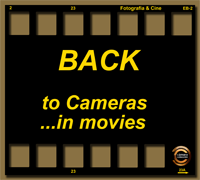
 |
| Chinatown -Chinatown- (1974) | |
The story, set in Los Angeles in 1937, was inspired by the California Water Wars, the historical disputes over land and water rights that had raged in southern California during the 1910s and 1920s, in which William Mulholland acted on behalf of Los Angeles interests to secure water rights in the Owens Valley. Chinatown has been called one of the greatest films ever made. It was nominated for eleven Academy Awards, winning in the category of Best Original Screenplay for Robert Towne. In 1991, Chinatown was selected for preservation in the United States National Film Registry by the Library of Congress as being "culturally, historically, or aesthetically significant." A sequel, called The Two Jakes, was released in 1990, starring Jack Nicholson, who also directed it, with a screenplay by Robert Towne. The film, however, failed to generate as much acclaim as its predecessor. Source: Wikipedia. |
|
 |
 |
In a scene of the movie, Nicholson uses a Leica IIIa with a Hektor 135mm f/4.5 telephoto. The Leica IIIa, or Leica G, is a 35mm rangefinder camera introduced by Leica in 1935 as an upgraded Leica III, adding a 1/1000s shutter speed. The Leica IIIa was made only in chrome finish. Black Leica IIIa's are earlier black cameras upgraded to IIIa in the Leica factory. After the second world war, about 500 Leica IIIa's were assembled in the Saar (France), by the optical firm of Saroptica, carrying the inscription "Monté en Sarre" in the top plate. More detalis in our Leica section (only in spanish). A chrome VIDOM finder was attached to the Leica body giving more veracity to the moment. VIDOM finder, manufactured from 1933-1939, is a variofocal finder that allows to close a frame with lens from 35mm to 135mm. This model replaced the torpedo finder model (1931) and was followed by the VIOOH finder (1940-1964). |
|
 |
|